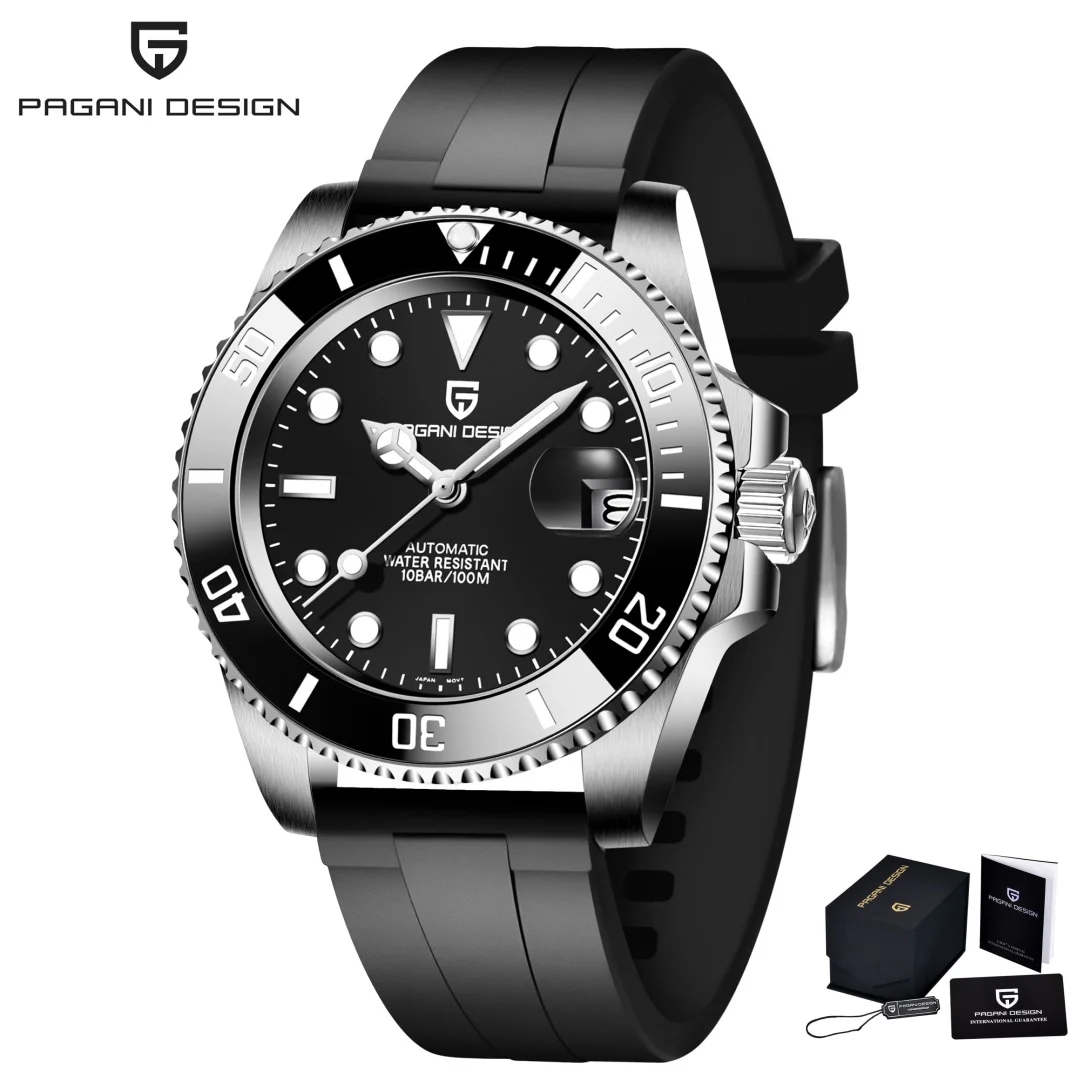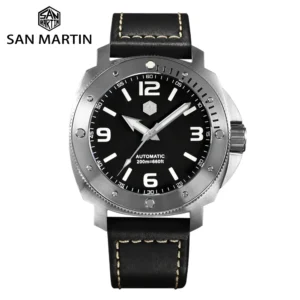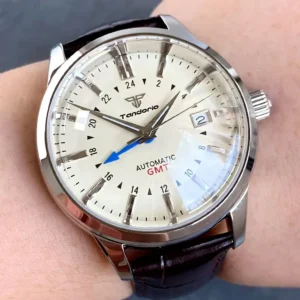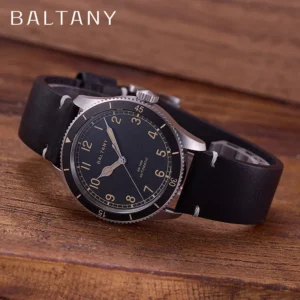What Defines a Truly Rugged Watch
When we talk about rugged watches, we’re looking beyond clever marketing terms to identify timepieces genuinely built to withstand extreme conditions. True ruggedness in watches isn’t just a single feature, but rather a comprehensive system of durability elements working together.
A genuinely rugged watch combines several critical characteristics:
- Impact resistance that protects against drops, bumps, and vibrations
- Water resistance suitable for submersion beyond casual splashes
- Material quality that resists scratches, corrosion, and degradation
- Secure components that maintain accuracy despite harsh treatment
- Reliable functionality in extreme temperatures and conditions
The importance of these durability factors varies depending on your environment. Divers require exceptional water resistance and pressure handling, while mountaineers prioritize shock resistance and temperature tolerance. Military personnel need watches that combine all these elements with reliability in life-or-death situations.
The rugged watch cases for outdoor adventures form the foundation of any tough timepiece, providing the primary barrier against environmental threats. Understanding what makes a watch truly rugged requires examining each component of the ultimate guide to tough watch cases and how they function as an integrated system.
For enthusiasts seeking exceptional durability, our collection of rugged automatic watches demonstrates how mechanical engineering meets environmental protection. As we explore each durability factor, you’ll understand why certain watches earn the right to be called genuinely rugged.
Case Construction: The Protective Shell
The case serves as a watch’s primary defense system, making material selection and construction methods critical to overall durability. Premium rugged watches utilize materials specifically chosen for their protective qualities.
Material Comparison
316L Stainless Steel: The industry standard offering excellent corrosion resistance at around 190-200 Vickers hardness. It provides good durability at a reasonable weight (approximately 8.0 g/cm³).
904L Stainless Steel: Superior corrosion resistance, particularly in saltwater environments. Slightly harder (approximately 200-210 Vickers) but considerably more expensive. Used in premium dive watches for enhanced longevity.
Titanium (Grade 2): About 45% lighter than steel (4.5 g/cm³) with excellent corrosion resistance but prone to scratching with a hardness of around 145-155 Vickers.
Titanium (Grade 5): Significantly harder than Grade 2 (approximately 320-350 Vickers) while maintaining light weight. Excellent for watches that need to combine durability with comfort for extended wear.
Carbon Fiber Composites: Extremely lightweight with excellent strength-to-weight ratios. Provides good shock absorption but typically requires reinforcement at stress points.
The engineering behind adventure watch cases has evolved significantly, with manufacturers developing proprietary alloys and construction techniques to enhance durability. The case design itself matters as much as the material, with monobloc (single-piece) constructions offering superior water and dust resistance by eliminating potential entry points.
Protection for vulnerable components like crowns and pushers is another crucial aspect of case construction. Crown guards – extended portions of the case that partially surround the crown – prevent accidental impacts and bumps. Similarly, recessed or screw-protected pushers in chronographs ensure these potential weak points don’t compromise overall durability.
Watches featuring titanium rugged watches durability benefit from the material’s exceptional strength-to-weight ratio, making them comfortable for extended wear while maintaining extraordinary resilience. For those requiring maximum durability in challenging environments, our tactical automatic watches feature reinforced case designs specifically engineered for extreme conditions.
Crystal Durability: Clarity Under Pressure
The crystal – the transparent cover protecting the watch face – presents a unique durability challenge: it must remain clear for legibility while withstanding impacts, scratches, and pressure. Different materials offer varying balances of these properties.
Crystal Material Comparison
Sapphire Crystal: Exceptional hardness (9 Mohs scale, second only to diamond) makes it virtually scratch-proof. However, its hardness comes with brittleness – while difficult to scratch, it can crack or shatter under sufficient impact.
Mineral Glass: Modified glass with improved hardness (5-6 Mohs) compared to standard glass. More scratch-resistant than acrylic but less than sapphire. Offers a middle ground in impact resistance and is less prone to shattering than sapphire.
Acrylic/Hesalite: Relatively soft (3-4 Mohs) and easily scratched but highly resistant to shattering. Scratches can be polished out, making it historically popular for military and space applications where preventing dangerous crystal fragments was critical.
Crystal thickness dramatically affects impact resistance, with premium rugged watches often featuring crystals 2-3mm thick compared to the 1-1.5mm typical in standard watches. The mounting method is equally important – a properly designed gasket system allows slight movement to absorb shocks rather than transferring them directly to the crystal edge.
Anti-reflective coatings improve readability but present a durability trade-off. While they reduce glare, these coatings can scratch more easily than the crystal itself. Many rugged watches apply the coating only to the underside of the crystal for protection while maintaining visibility benefits.
For smartwatches and modern rugged timepieces, materials like Gorilla Glass offer a compromise between sapphire’s scratch resistance and acrylic’s shatter resistance, though they still don’t match the scratch resistance of true sapphire.
Our professional spec dive watches feature premium crystal materials and mounting systems designed to maintain clarity and structural integrity even under extreme underwater pressure.
Water Resistance: Keeping Moisture at Bay
Water resistance remains one of the most misunderstood aspects of watch durability. The ratings often displayed on watch dials (30m, 50m, 100m, etc.) don’t necessarily reflect the actual depth a watch can safely reach.
Water Resistance Ratings and Real-World Usage
| Rating | Pressure (ATM) | Suitable For |
|---|---|---|
| 30m/3 ATM | 3 bar | Splash resistance, rain (not suitable for swimming) |
| 50m/5 ATM | 5 bar | Brief swimming, showering (no diving or high-pressure water) |
| 100m/10 ATM | 10 bar | Swimming, snorkeling, surface water sports |
| 200m/20 ATM | 20 bar | Recreational scuba diving, serious water sports |
| 300m+ | 30+ bar | Professional/saturation diving |
The truth behind water resistance lies in the sealing systems. Multiple gaskets (O-rings) create water-tight seals at potential entry points. These gaskets require proper maintenance and periodic replacement as they can degrade over time.
Watch standards provide important guidance on water resistance. ISO 22810 applies to general water-resistant watches, while ISO 6425 specifically governs dive watches, requiring additional testing including pressure testing every unit and condensation resistance.
Critical water resistance features include:
- Screw-down crowns that create additional sealing when tightened
- Helium escape valves in saturation diving watches that prevent damage during decompression
- Case back designs with either screw-down or compression sealing systems
- Pressure testing during manufacturing to verify water resistance claims
The milestones in underwater watch engineering have continuously improved sealing technology, allowing today’s watches to withstand conditions that would have been impossible decades ago. For enthusiasts seeking exceptional water protection, our automatic dive watches feature advanced sealing systems tested beyond typical industry standards.
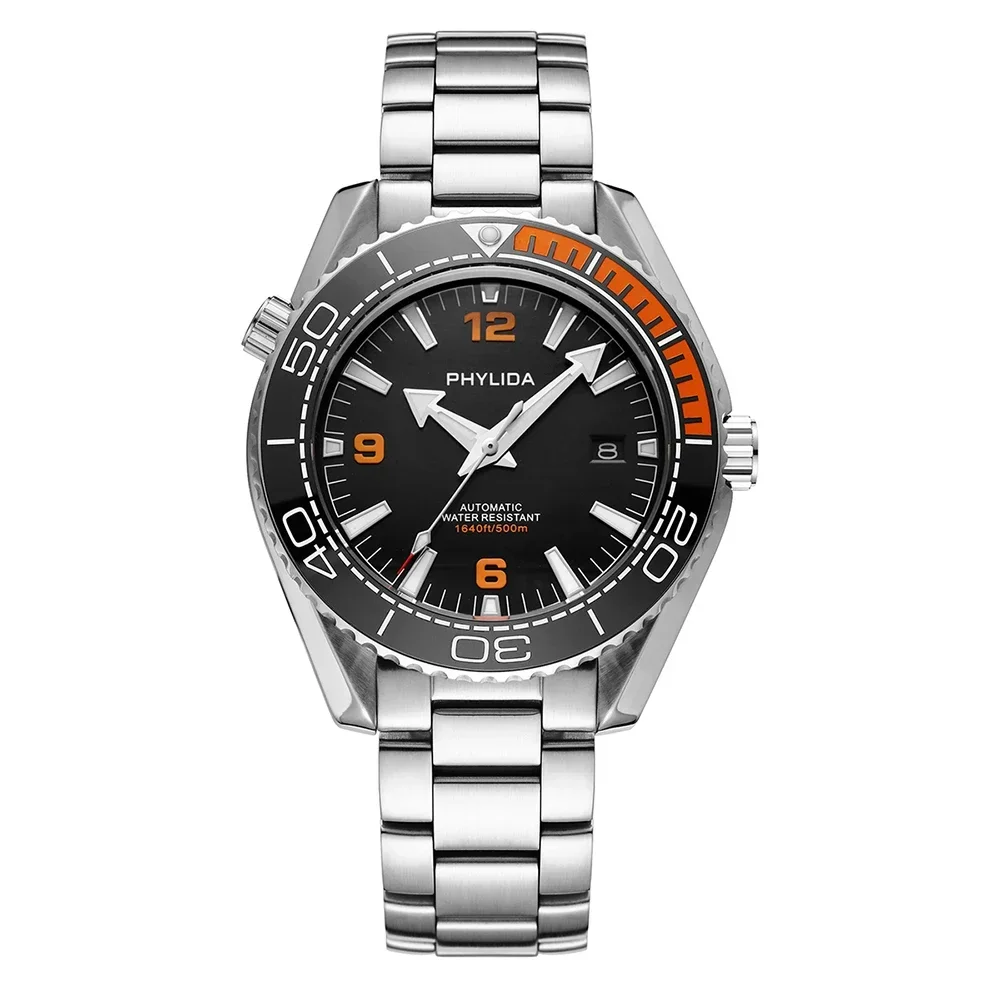
Movement Protection: Safeguarding the Heart
The movement – a watch’s engine – requires specialized protection as it contains delicate components that must maintain precision despite external forces. Different movement types offer varying inherent durability advantages.
Quartz movements generally provide superior shock resistance due to fewer moving parts and lighter components. However, high-quality mechanical movements incorporate sophisticated shock protection systems to safeguard their most vulnerable components.
These shock protection systems focus primarily on the balance staff – the axle supporting the balance wheel that regulates timekeeping. Systems like Incabloc, Diashock, and Paraflex use spring-loaded jewel bearings that allow the balance staff to momentarily shift position during impacts rather than break.
Magnetism presents another serious threat to movement accuracy. Traditional protection methods include soft iron inner cases that create a Faraday cage around the movement, redirecting magnetic fields around rather than through the sensitive components. Modern advancements include using silicon and other non-ferrous materials for critical components, making them inherently resistant to magnetic fields.
The ultimate guide to shock resistance watches examines how movement holders and internal dampening structures work together to isolate the movement from external forces. These systems often use rubber or elastomer components strategically placed to absorb vibrations before they reach the movement.
Temperature extremes can also affect movement performance and durability. High-quality rugged watches use lubricants specifically designed to maintain proper viscosity across a wide temperature range, ensuring reliability from arctic to desert conditions.
For those seeking maximum movement protection in challenging environments, our automatic field military watches feature comprehensive movement protection systems designed for reliability in extreme conditions.
Strap and Bracelet Durability
Even the most robust watch case is only as durable as its weakest link – often literally the strap or bracelet attachment points. These components not only secure the watch to your wrist but must withstand constant movement, exposure to elements, and physical stress.
Strap Material Comparison
Stainless Steel Bracelets
* Pros: Exceptional durability, good corrosion resistance, integrated appearance
* Cons: Heavier weight, can pull arm hair, conducts temperature extremes
Titanium Bracelets
* Pros: Significantly lighter than steel, excellent corrosion resistance, hypoallergenic
* Cons: More expensive, can scratch more easily unless specially treated
Rubber/Silicone
* Pros: Waterproof, flexible, comfortable, available in various colors
* Cons: Can degrade over time from UV exposure, may trap moisture against skin
Nylon (NATO/ZULU)
* Pros: Lightweight, quick-drying, easily replaceable, additional security from two-piece design
* Cons: Can absorb odors, may fray over time, less formal appearance
The attachment points between strap and case represent a critical durability factor. Standard spring bars are the most common but also most vulnerable attachment method. Rugged watches often use screwed bars or integrated designs that eliminate this potential failure point.
Clasp designs significantly impact security. Pin buckles offer simplicity and reliability, while deployant clasps provide convenience but introduce additional moving parts. Safety folding clasps with secondary locking mechanisms offer the best security for diving and extreme activities.
Considering long-term wear, the ability to easily replace straps extends a watch’s practical lifespan. Some proprietary strap designs limit replacement options, while standard lug designs maintain flexibility for future strap changes as materials age.
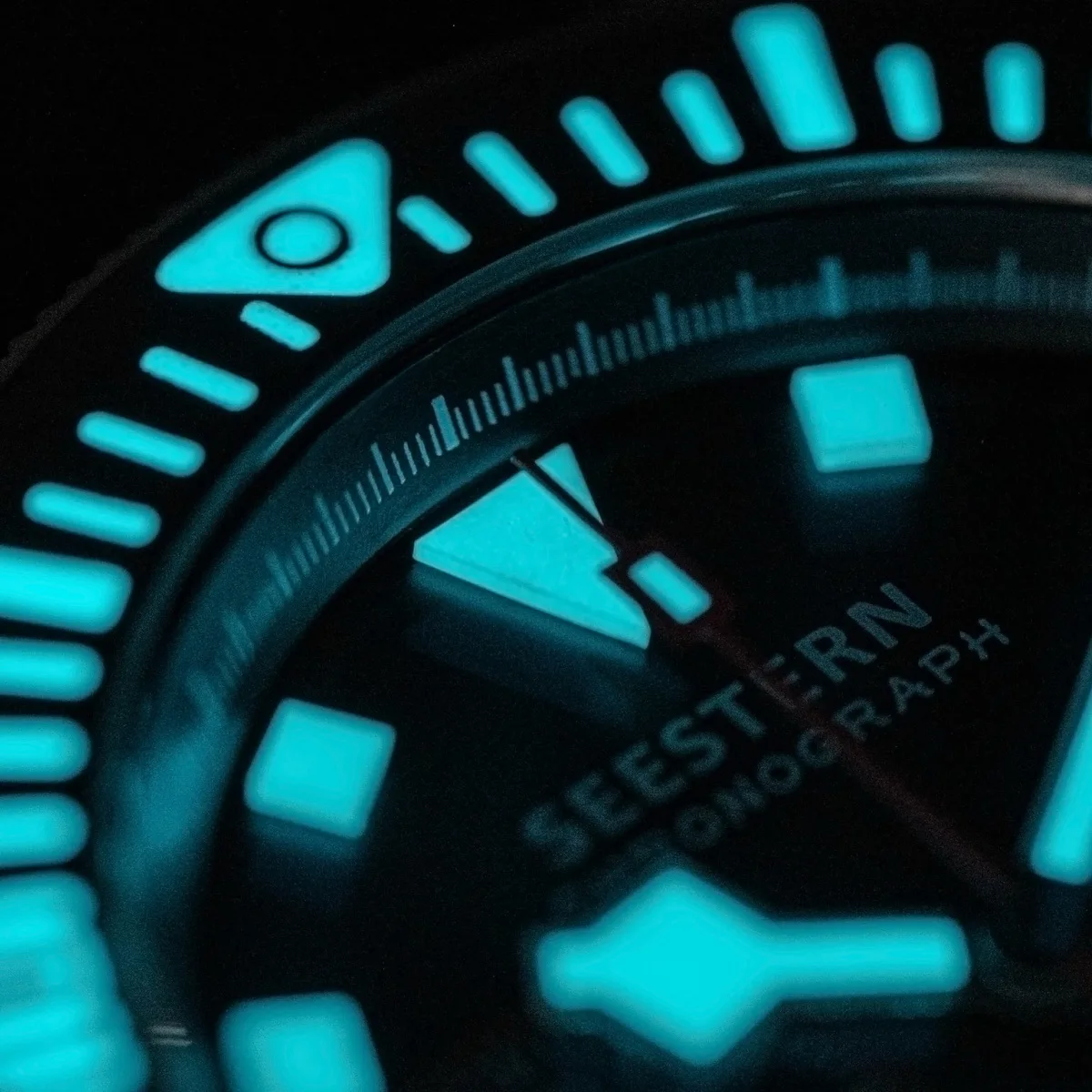
Military and Professional Standards
Military and professional testing standards provide objective measures of a watch’s durability claims. These standardized tests subject watches to controlled extreme conditions far beyond typical consumer use.
The most widely referenced military standard, MIL-STD-810, encompasses a comprehensive series of environmental tests including:
- Shock resistance: Drops from 4 feet (1.22 meters) onto hard surfaces
- Temperature extremes: Function from -40°F to 160°F (-40°C to 71°C)
- Humidity resistance: Operation in 100% humidity environments
- Salt fog exposure: Corrosion resistance testing
- Sand and dust protection: Particle intrusion prevention
- Vibration resistance: Function during continuous mechanical vibration
Beyond military standards, industry-specific certifications validate watches for specialized environments. The ISO 6425 standard for dive watches, previously mentioned, requires water resistance testing at 125% of the rated depth, luminosity testing, magnetic resistance, shock resistance, and salt water immersion tests.
Many manufacturers develop proprietary testing that exceeds these standards. These may include impact testing with pendulum hammers, extreme pressure testing in hyperbaric chambers, or accelerated aging tests to predict decades of wear.
Understanding the military necessity that forged the modern field watch provides context for these rigorous standards. For collectors seeking timepieces built to these exacting specifications, our military-inspired automatic watches reflect this heritage of exceptional durability.
Specialized Durability Enhancements
Beyond basic construction, truly exceptional rugged watches incorporate specialized technologies that further enhance durability for specific environments and use cases.
Protective Coatings
* Diamond-Like Carbon (DLC): Adds 1500-3000 Vickers hardness to the base material while providing a sleek black appearance
* Physical Vapor Deposition (PVD): Creates colored, corrosion-resistant surfaces with moderate hardness improvement
* Ceramic Coatings: Extremely scratch-resistant but potentially more brittle than metal substrates
Advanced Bezel Designs
* Unidirectional bezels that prevent accidental increases in timing (critical for dive safety)
* Protected bezel mechanisms that prevent unintended movement
* Ceramic and sapphire bezel inserts that resist scratches and maintain legibility
Luminous Materials
* Super-LumiNova and similar photoluminescent compounds provide 8+ hours of diminishing brightness
* Tritium gas tubes offer constant illumination for 10+ years without requiring light charging
* The luminosity in tactical automatic watches provides critical readability in low-light conditions when timing may be mission-critical
Power Management
* Solar charging capabilities that eliminate battery changes
* Kinetic/automatic energy storage that converts movement to power
* Low-power consumption designs for extended battery life in digital rugged watches
Specialized Gaskets
* Fluoroelastomer compounds that resist chemical exposure
* Multi-stage sealing systems for redundant protection
* Temperature-tolerant materials that maintain flexibility in extreme conditions
Military Inspired Automatic Watches, Rugged Automatic Watches, Tactical Automatic Watches
Price range: $852.14 through $994.60 Select options This product has multiple variants. The options may be chosen on the product pageAutomatic Chronograph Watches, Classic Style Dive Watches
$3,053.06 Select options This product has multiple variants. The options may be chosen on the product pageBronze Automatic Watches, Military Inspired Automatic Watches, Professional Spec Dive Watches
Price range: $1,442.21 through $1,442.82 Select options This product has multiple variants. The options may be chosen on the product pageProfessional Spec Dive Watches, Titanium Automatic Watches
$574.74 Select options This product has multiple variants. The options may be chosen on the product pageClassic Automatic Dress Watches, GMT Automatic Watches, GMT Dive Watches
Price range: $468.93 through $552.94 Select options This product has multiple variants. The options may be chosen on the product pageClassic Pilot Watches, Military Inspired Automatic Watches
$561.00 Select options This product has multiple variants. The options may be chosen on the product page
Common Failure Points and Their Solutions
Understanding the typical vulnerabilities in watches helps manufacturers design solutions and helps consumers evaluate durability claims. These common failure points have driven innovation in rugged watch design.
Crown and Stem Assembly
Problem: The crown provides a necessary opening in the case for setting and winding, creating a potential water entry point and mechanical vulnerability.
Solution: Screw-down crowns with multiple gaskets, crown guards to prevent impact damage, and reinforced stem assemblies minimize this vulnerability.
Crystal Edges
Problem: The junction between crystal and case creates a potential weak point where impacts can cause the crystal to dislodge or break.
Solution: Recessed crystals that sit below the bezel level, specialized gasket systems, and proper crystal thickness distribution (thicker at the edges) help address this vulnerability.
Case Back Seals
Problem: The removable case back necessary for service creates another potential entry point for moisture and dust.
Solution: Screw-down case backs with precision threading, multiple gasket systems, and proper torque specifications during closure ensure long-term sealing.
Strap Attachment Points
Problem: Spring bars and lugs create stress concentration points that can fail under load.
Solution: Integrated straps, screwed bars, reinforced lugs, and redundant attachment systems prevent this common failure.
The development of rugged watches for extreme conditions has specifically addressed these vulnerabilities through engineering solutions. Understanding these failure points helps consumers properly maintain their watches and make informed purchasing decisions.
How to Evaluate a Rugged Watch Before Purchase
With marketing terms like “indestructible” and “extreme” used liberally, how can you objectively assess a watch’s true durability? Use this systematic approach to evaluate watches before purchasing:
Material Verification
* Confirm specific material grades (not just “stainless steel” but “316L” or “904L”)
* Verify crystal material (true sapphire vs. mineral or “sapphire-coated”)
* Check if protective coatings are applied and what type
Construction Assessment
* Examine crown protection systems and whether crowns are screw-down
* Verify case back attachment method (screw-down vs. press-fit)
* Check the strap attachment security and replacement options
Certification Verification
* Look for specific standards compliance (ISO 6425 for dive watches)
* Check if testing is performed on all units or just samples
* Research any proprietary testing standards the manufacturer claims
Functional Evaluation
* Assess bezel action for security and precision
* Test crown operation for smoothness and secure engagement
* Evaluate readability under various lighting conditions
Warranty and Service
* Check warranty coverage specifically for water damage
* Research service intervals and availability
* Consider the manufacturer’s reputation for honoring durability claims
When choosing the perfect watch for outdoor adventures, matching durability features to your specific activities ensures you get protection where you need it most without paying for unnecessary features.
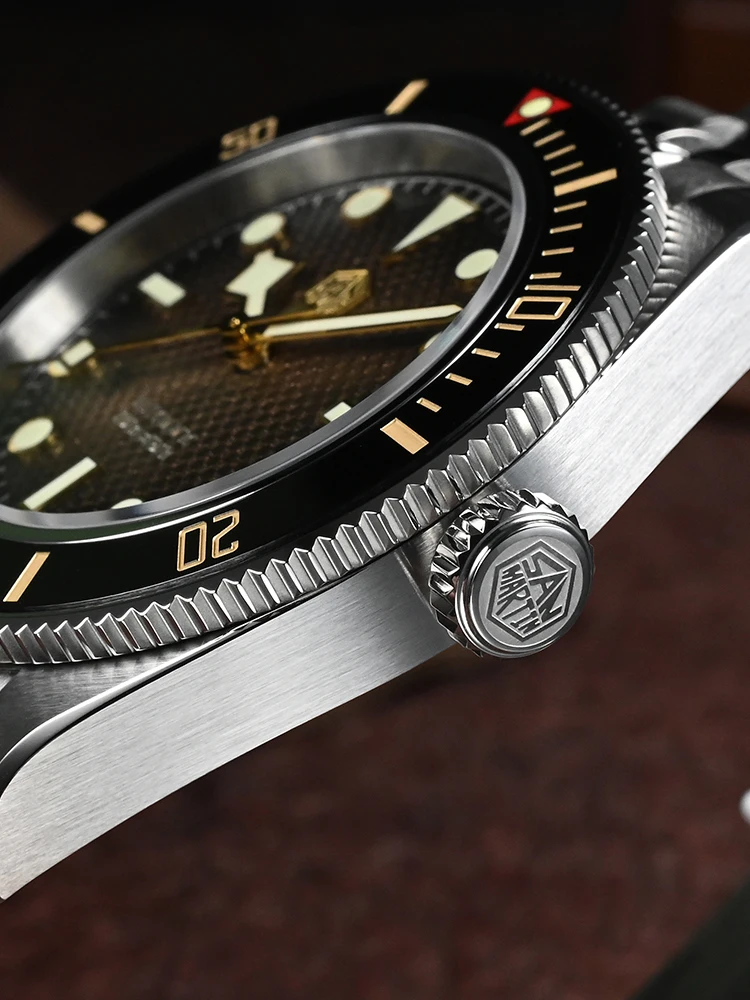
Maintaining Durability Through Proper Care
Even the most rugged watch requires proper maintenance to preserve its durability features over time.
How often should rugged watches be serviced?
Most manufacturers recommend professional service every 3-5 years for mechanical watches and gasket replacement every 1-2 years for frequently submerged watches. However, this varies based on usage conditions – watches regularly exposed to saltwater or extreme environments may need more frequent service.
Can water resistance degrade over time?
Yes, water resistance is not permanent. Gaskets compress and degrade over time, making regular testing and replacement essential for maintaining protection. Most manufacturers recommend annual water resistance testing for watches regularly used in water.
What cleaning methods are safe for different case materials?
Stainless steel and most modern case materials can be cleaned with mild soap and water using a soft brush for crevices. Rinse thoroughly with fresh water after saltwater exposure. Avoid chemical cleaners on gaskets and crystals, as they may cause degradation.
Which activities might exceed even a rugged watch’s capabilities?
Direct impacts in contact sports, exposure to strong magnetic fields, extreme vibration (jackhammering, chainsaw operation), and certain chemical exposures can challenge even the most rugged watches. Consider removing your watch during these activities or selecting a specialized timepiece designed for these specific conditions.
By understanding both the engineering behind durability factors and the proper care required to maintain them, you can select a rugged watch that will reliably accompany you through challenging environments for years to come.

